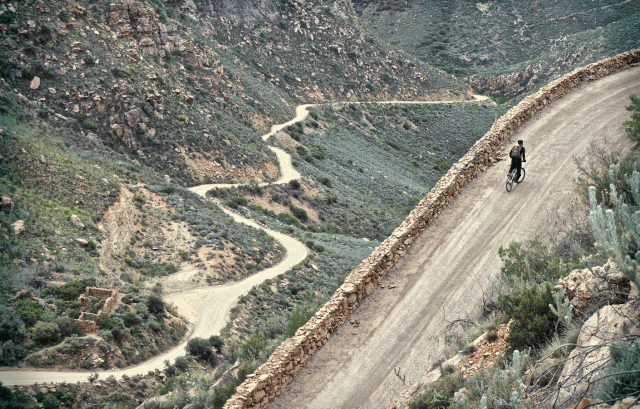The Key To Riding Longer
Racing hard, training hard, recovering fast – and avoiding the bonk. Here's how.
Racing hard, training hard, recovering fast – and avoiding the bonk. Here’s how. – By Mark Carroll

Maximising the benefits of long rides and being able to do back-to-back days is all dependent on how well you eat.
 This chart shows your body’s fuel usage during continuous, moderate-intensity exercise. What’s interesting to note from the chart is that from the start, your muscles only provide 50% of your total fuel (glycogen) when completely carb-loaded, your blood glucose 10%, and your fat reserve 40%. As exercise continues, you can see that muscle glycogen levels drop. At the two-hour mark, your muscles are only providing approximately 30% of your body’s total fuel usage. However, your blood glucose actually takes up the slack and provides more (around 15%) fuel for exercise than it did at the start. After two hours you can see that if you don’t consume any carbs during exercise (gels, energy drink, food, etc), your blood glucose levels drop sharply. At the three-hour mark, your blood glucose levels will start to dip below 10% of your body’s total usage. By the four-hour mark, your blood glucose levels (as well as your muscle glycogen reserve) will have tanked. This is when you ‘bonk’.
This chart shows your body’s fuel usage during continuous, moderate-intensity exercise. What’s interesting to note from the chart is that from the start, your muscles only provide 50% of your total fuel (glycogen) when completely carb-loaded, your blood glucose 10%, and your fat reserve 40%. As exercise continues, you can see that muscle glycogen levels drop. At the two-hour mark, your muscles are only providing approximately 30% of your body’s total fuel usage. However, your blood glucose actually takes up the slack and provides more (around 15%) fuel for exercise than it did at the start. After two hours you can see that if you don’t consume any carbs during exercise (gels, energy drink, food, etc), your blood glucose levels drop sharply. At the three-hour mark, your blood glucose levels will start to dip below 10% of your body’s total usage. By the four-hour mark, your blood glucose levels (as well as your muscle glycogen reserve) will have tanked. This is when you ‘bonk’.
Now, if at the two hour mark you ingest some carbs, you’ll avoid ‘bonking’. However, regardless of how much carbohydrate you ingest, you can’t restore muscle glycogen levels. That’s because your body can’t process carbs quickly enough; your muscles need rest to clear out the high acidity and repair themselves before glycogen resynthesis.
The most important take-out from this chart is to ensure, before you start your long endurance training (or racing), that your carb levels are topped off. You want your muscle glycogen levels maxed out, as well as your blood glucose levels. Plus, the more you can do to spare muscle glycogen levels, the better – such as ensuring you consume carbs during the ride.
Note: glycogen depletion happens faster if the intensity level is increased. Instead of being depleted at the four-hour mark, it could happen at the two- or three-hour mark.
Eating To Sustain And Recover
- For long rides, get in a breakfast of proper oats and a boiled egg. Keep the oats portion size moderate, though – you don’t want to start the ride feeling full.
- You can (and should) ingest 850–1 000kJ of energy per hour, no more or less. I have energy dips in the late stages of a ride if I fail to hit this energy-intake target in the first hour.
- You have limited digestive ability while riding; if you miss an eating window, you can’t catch it up – so eat early, and often.
- There’s a range of convenient energy foods available, or you can simply go for a croissant with Nutella. In the bottle, energy drinks with electrolytes; but beware of the kilojoule-rich combination of energy drink plus food.
- After your ride: good old LOW-FAT chocolate milk![/box]
READ MORE ON: nutrition Skills training programmes

